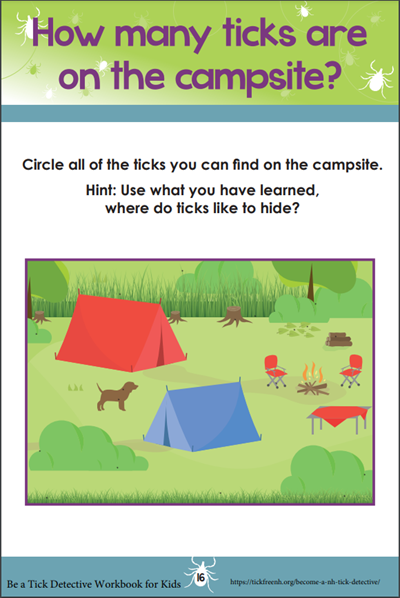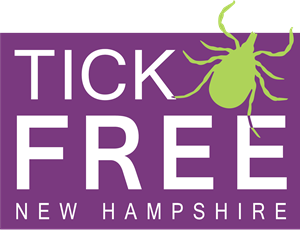Become a NH Tick Detective
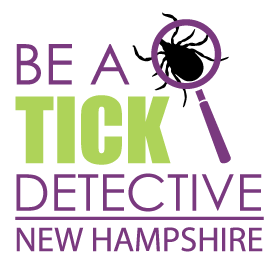 Calling all kids! You can become a New Hampshire Tick Detective.
Calling all kids! You can become a New Hampshire Tick Detective.
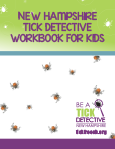 The NH Tick Detective Workbook for Kids is full of educational activities for kids grades Kindergarten – 4th. Kids can learn how to identify and protect themselves from tick encounters. We try to provide all classrooms and kids with these workbooks and tick spoons a no or low-cost (if there is funding available), please reach out to us. We can also help a class find a sponsor and we love pick-ups to save on shipping when available.
The NH Tick Detective Workbook for Kids is full of educational activities for kids grades Kindergarten – 4th. Kids can learn how to identify and protect themselves from tick encounters. We try to provide all classrooms and kids with these workbooks and tick spoons a no or low-cost (if there is funding available), please reach out to us. We can also help a class find a sponsor and we love pick-ups to save on shipping when available.
Did your class enjoy the workbooks? Send us a pic or share and tag us on social – we would love to hear what your class learned from the materials.
You can order hard copies of the New Hampshire Tick Detective Workbook for Kids. Not ready to order? Download selected worksheets and preview an excerpt of the book.
We are interested in developing a Tick Detective Workbook for middle school aged kids—please contact us if you want to be a test classroom for this material!
What are ticks?
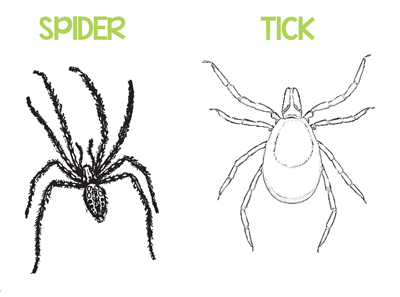 Ticks are put into the same category as small spiders (arachnids). Like a spider, ticks have eight legs. There are about 899 different kinds (species) of ticks in the world. In New Hampshire there are six types of ticks.
Ticks are put into the same category as small spiders (arachnids). Like a spider, ticks have eight legs. There are about 899 different kinds (species) of ticks in the world. In New Hampshire there are six types of ticks.
Most ticks have three stages of growth: larvae, nymph, and adult. A nymph can be as small as a poppy seed. Adult ticks are not very big either. Ticks need to eat blood from an animal or a person to go through each growth (life cycle). They prefer blood from mammals (warm-blooded animals like deer or people) and birds, but they have also been found on reptiles and amphibians (like snakes or frogs).
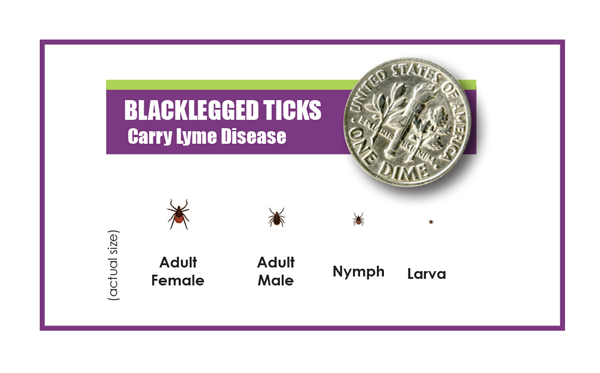
Why are ticks bad?
Ticks can make you sick. They can carry diseases (bacteria) in their blood that can make people and other animals sick. When ticks bite a person or an animal, the bacteria is transferred over to them and can cause a lot of health issues.
Where do ticks live?
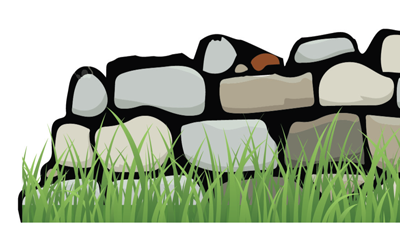 Ticks like to live in or near areas with wood and grass. Often ticks are found in areas with trees, under leaves on the ground, around woodpiles or stonewalls, or around tall grass.
Ticks like to live in or near areas with wood and grass. Often ticks are found in areas with trees, under leaves on the ground, around woodpiles or stonewalls, or around tall grass.
Ticks can dry out. They like moist and humid (warm and wet) places to live (environments or habitats).
How do I protect myself against ticks?
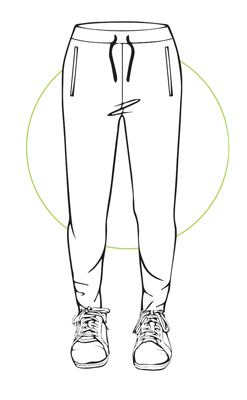 There are many ways to protect yourself from being bitten by a tick!
There are many ways to protect yourself from being bitten by a tick!
Wear long pants and long-sleeved shirts while outside. Tuck your pants into your socks and your shirt into your pants so ticks cannot crawl into your clothes.
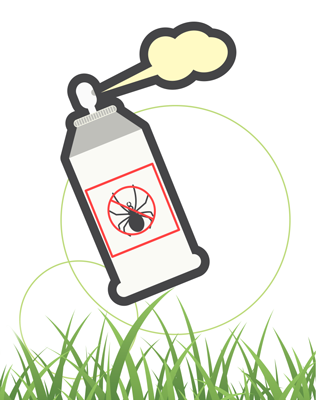 Use a repellent. An adult can spray your clothes with permethrin (a chemical). Once it is dry, it is safe and will protect you from ticks.
Use a repellent. An adult can spray your clothes with permethrin (a chemical). Once it is dry, it is safe and will protect you from ticks.
Adults: ALWAYS spray on hands first, then put on a child’s skin – spray outdoors – do not breathe in the bug spray. Wash your hands afterwards.
Wear light colored clothes while outside in tick habitats (where ticks live) to easily see ticks crawling on your clothes.
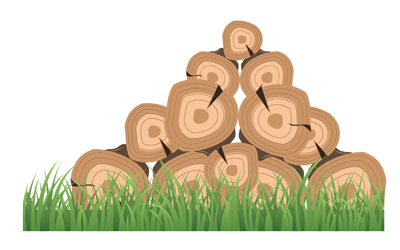 Stay on trails in the woods – when you brush by leaves, ticks may get on to your body. Do not go into places where you know ticks live, like: brush and tall grass or a woodpile.
Stay on trails in the woods – when you brush by leaves, ticks may get on to your body. Do not go into places where you know ticks live, like: brush and tall grass or a woodpile.
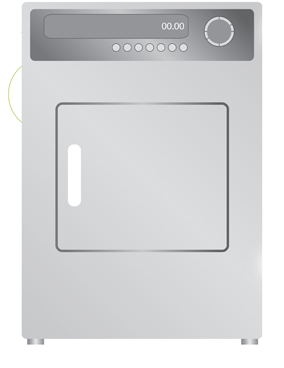 After coming back indoors, put your clothes in the dryer. Have an adult run the dryer on high heat for 10 minutes. This will kill any ticks that may be on the clothing.
After coming back indoors, put your clothes in the dryer. Have an adult run the dryer on high heat for 10 minutes. This will kill any ticks that may be on the clothing.
ALWAYS do a tick check if you have been outside. It is hard to see your own body. Ask an adult (mom or dad) to check your body, armpits, and hair for ticks. Use a flashlight to see your skin better.
 Check pets, too! Ticks like to ride into your house on your pet.
Check pets, too! Ticks like to ride into your house on your pet.
Where do ticks like to hide on your body?
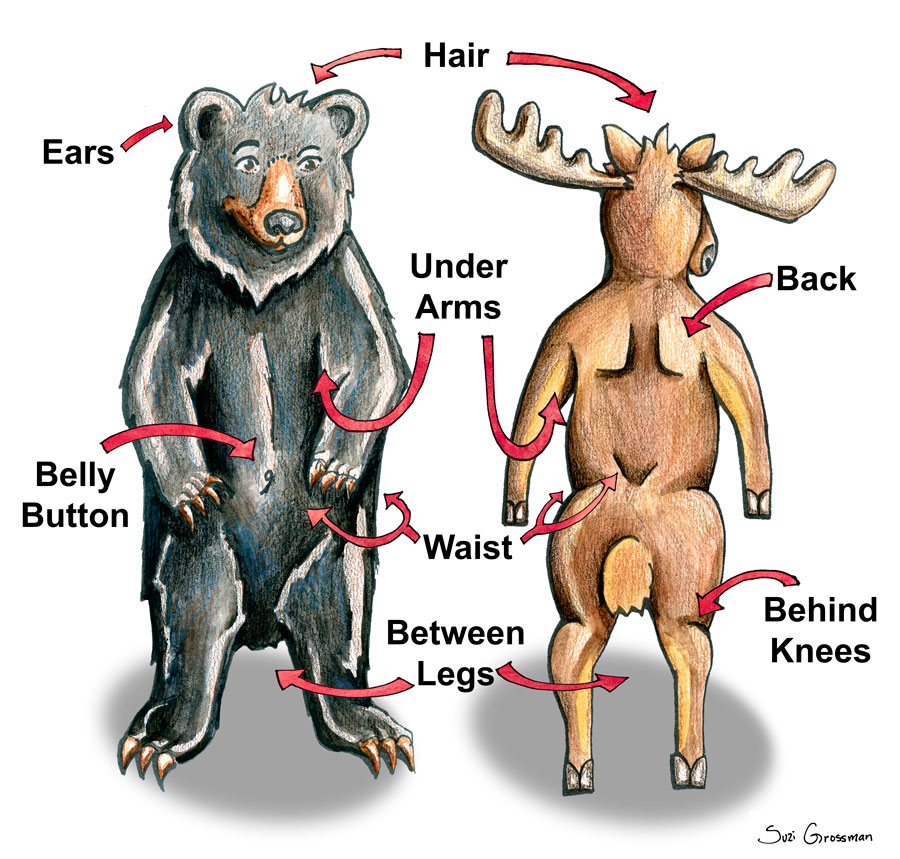
Sing this popular song while doing a tick-check:
Knees and toes
Head and shoulders knees and toes
Knees and toes
eyes and ears
And mouth and nose
Head and shoulders knees and toes
Knees and toes
Arms and chins
Feet and tummies arms and chins
Arms and chins
And eyes and ears
And mouth and shins
Feet and tummies arms and chins
Arms and chins
Legs and lips
Hands and fingers legs and lips
Legs and lips
And eyes and ears
And mouth and hips
Hands and fingers legs and lips
Legs and lips
Glossary
arachnids: an arthropod of the class Arachnida, such as a spider or scorpion.
species: a group of living organisms consisting of similar individuals capable of exchanging genes or interbreeding. The species is the principal natural taxonomic unit, ranking below a genus and denoted by a Latin binomial, e.g., Homo sapiens.
nymph: an immature form of an insect that does not change greatly as it grows, e.g., a dragonfly, mayfly, or locust.
life cycle: the series of changes in the life of an organism, including reproduction.
mammals: a warm-blooded vertebrate animal of a class that is distinguished by the possession of hair or fur, the secretion of milk by females for the nourishment of the young, and (typically) the birth of live young.
reptiles: a vertebrate animal of a class that includes snakes, lizards, crocodiles, turtles, and tortoises. They are distinguished by having a dry scaly skin and typically laying soft-shelled eggs on land.
amphibians: a cold-blooded vertebrate animal of a class that comprises the frogs, toads, newts, and salamanders. They are distinguished by having an aquatic gill-breathing larval stage followed (typically) by a terrestrial lung-breathing adult stage.
disease: a disorder of structure or function in a human, animal, or plant, especially one that produces specific signs or symptoms or that affects a specific location and is not simply a direct result of physical injury.
humid: marked by a relatively high level of water vapor in the atmosphere.
environments: the surroundings or conditions in which a person, animal, or plant lives or operates.
habitats: the natural home or environment of an animal, plant, or other organism.
repellent: a substance that deters insects or other pests from approaching or settling.
DEET: a brand of diethyltoluamide, a colorless oily liquid with a mild odor, used as an insect repellent.
permethrin: a synthetic insecticide of the pyrethroid class, used chiefly against disease-carrying insects.
tick check: The action of checking your clothing, body and pets for ticks
remove: take (something) away or off from the position occupied.
Download selected worksheets from NH Tick Detective Workbook for Kids
American Dog Tick Worksheet – Tick Free NH
Blacklegged Deer Tick Worksheet – Tick Free NH
Woodchuck Tick Worksheet – Tick Free NH
Protective Clothing Worksheet – Tick Free NH
Find the Ticks Worksheet – Tick Free NH
